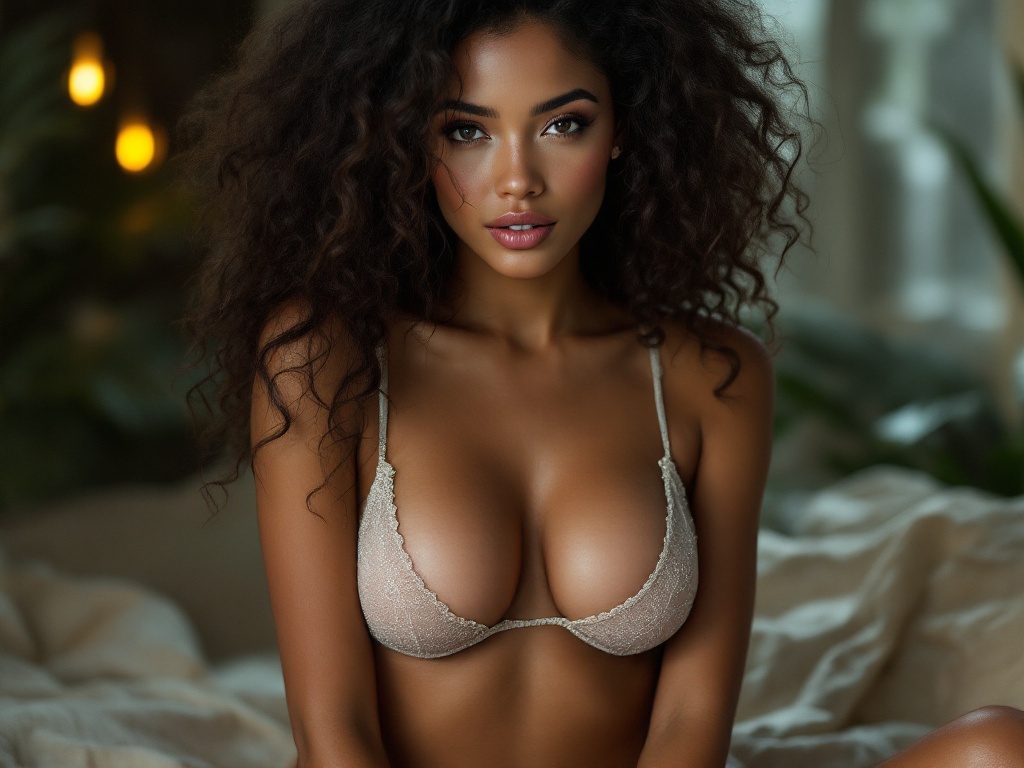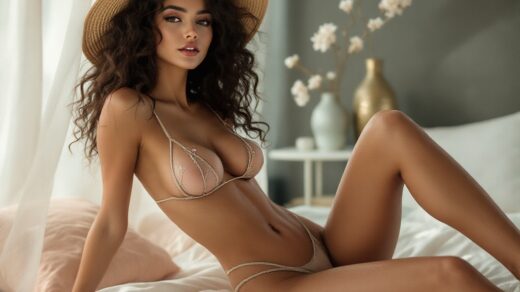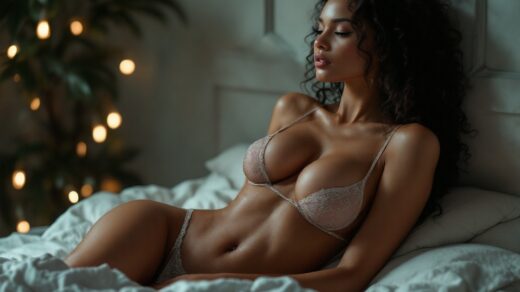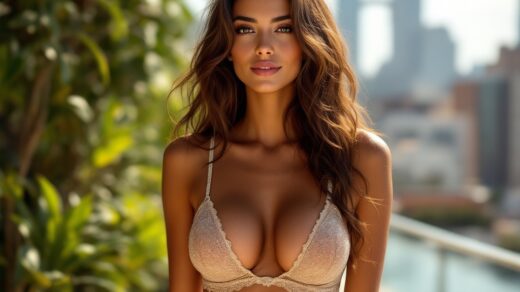What is AI-Generated Erotic Art?
AI-generated erotic art represents an intriguing fusion of technology and aesthetics, where algorithms create imagery leveraging extensive datasets of visual references. This artistic form employs machine learning principles to identify patterns within pre-existing works, yielding new interpretations that stand out as remarkably distinct. The outcome is art that showcases not just the technical capabilities of AI but also encapsulates the cultural and emotional nuances tied to eroticism. Artists are capable of inputting specific parameters and preferences, which prompts the AI to generate images that align with or even surpass traditional artistic methods. Many creators find this novel medium appealing, as it enables them to explore themes of eroticism from angles that may have been previously unexamined. While AI does have its constraints, its capacity to experiment with forms and depictions is pushing limits and igniting discussions about authenticity in art.
The Importance of Realistic Human Anatomy in Erotic Art
Realistic portrayals of human anatomy are crucial to the effectiveness of erotic art, impacting both aesthetics and emotional connections. An expertly rendered depiction of the human form can stir feelings of attraction and closeness, inviting audiences deeper into the artistic realm. Such precision in anatomy bolsters credibility, facilitating a visceral connection between artists and their viewers. Furthermore, this authentic representation can make the depicted figures—whether painted or digitally crafted — feel more relatable, amplifying the overall effect of the artwork. This sense of realism also lends itself to subtle narratives within the art, uncovering profound layers of meaning and feeling. Absent this realism, art may lack the essential link to human experiences and perceptions that endow erotic art with its potency.

The Appeal of Realism
The allure of realism in erotic art notably originates from its capacity to mirror the intricate journey of human experience. The suspense built through authentic forms can amplify emotional context, transforming the artwork into a conversation between the observer and the intentions of the creator. Realistic art frequently garners admiration for the artistry involved in capturing intricate particulars, from skin textures to the subtleties of motion. Here are some key elements contributing to this allure:
- Genuineness in Representation: Audiences gravitate towards artwork that reflects real-life experiences.
- Emotional Depth: Realistic features can evoke profound feelings, crafting a multi-layered experience.
- Artistic Skill: The ability to create lifelike bodies displays the artist’s expertise and commitment.
The Role of Anatomy Knowledge
A solid grasp of human anatomy is essential for artists aspiring to create impactful pieces. Understanding anatomical structure, proportions, and forms lays the groundwork for producing both visually striking and credible representations. Whether by human hands or AI, the intricate details derived from this knowledge can elevate artwork from simple illustration to evocative creations. AI learns from a wide array of sources, including anatomical charts, allowing it to replicate the complexities of human anatomy with astonishing precision. This interplay between traditional artistic knowledge and cutting-edge technology underscores the necessity of expertise in producing high-quality erotic art. The blend of human creativity and AI’s technical faculties sparks a new era of artistic expression.
How AI Learns Human Anatomy
AI harnesses several vital mechanisms to effectively learn and replicate human anatomy, illustrating its capability to combine data with creative intuition. At its core lie machine learning techniques that enable algorithms to self-correct and refine their outputs over time. Among these methods, Generative Adversarial Networks (GANs) stand out due to their dual-network structure that pits two neural networks against each other, enhancing detail and precision. By consistently assessing generated art against the dataset, GANs learn the subtleties of human proportion and movement more proficiently. Additionally, the careful selection of datasets used for training profoundly influences the effectiveness of AI art generation. Below is a table summarizing prevalent AI techniques and their attributes:
| Technique | Description |
|---|---|
| Generative Adversarial Networks (GANs) | Two neural networks that enhance each other’s learning to produce realistic imagery. |
| Deep Learning | Examines extensive datasets to discern patterns and generate results. |
| Style Transfer | Imparts stylistic elements from one image to another, fostering creativity. |
Moreover, the ethical dimensions associated with the creation and utilization of datasets cannot be overlooked. Obtaining consent when integrating images of human anatomy into training sets is crucial for maintaining the integrity of the art produced. As the boundary between creativity and technology continues to blur, grasping these foundational principles remains essential for both AI developers and artists.
Challenges and Controversies in AI Erotic Art
Like any emerging medium, there are numerous challenges and controversies surrounding AI-generated erotic art. Critics frequently highlight significant ethical questions, raising concerns over the implications of machine-generated portrayals of the human form. A prominent issue revolves around consent; ensuring that all components within AI datasets are ethically sourced is vital. This concern contributes to larger discussions about representation and the inherent power dynamics in artistic creation, particularly regarding sexual themes. Additionally, cultural sensitivities must be recognized. The reception of erotic art can differ greatly among cultures, influencing how AI-generated art is perceived worldwide. Here are some challenges that arise:
- Addressing consent issues and the meanings behind the use of human figures.
- Navigating cultural disparities in perceptions of eroticism.
- Concerns about the authenticity and emotional depth of AI-generated creations.
The Future of AI and Erotic Art
Looking ahead, the partnership between AI technology and erotic art is poised for thrilling advancements. As algorithms become even more refined, we can anticipate increasingly lifelike representations of human forms, captivating audiences while preserving emotional depth. Personalization is also likely to play a crucial role, with AI adapting to individual preferences to craft works that resonate on a deeper level. Collaborations between human creators and AI systems may yield groundbreaking hybrid techniques, amplifying artistic possibilities within the erotic genre. Ultimately, as technology progresses, so too will the range of creativity, prompting thought-provoking inquiries about the essence of creating and experiencing art in an AI-enhanced future. Delving into these ideas deepens our appreciation of the delicate balance between innovation and the human touch.
Conclusion
The convergence of AI, erotic art, and realistic human anatomy constitutes a rich tapestry of creativity, innovation, and ethical considerations. As we journey through this evolving landscape, we confront the complexities that emerge from the intersection of technology and human experience. AI’s ability to interpret and replicate the intricacies of human anatomy amplifies the potential for artistic expression, challenging conventional thresholds while inviting scrutiny. The dialogue that unfolds not only questions our definitions of art but also reexamines the role of the artist in a technology-driven landscape. Through this examination, we acknowledge the significance of human emotion and experience, illustrating that while AI may create, it is the human spirit that imparts true meaning to art.
FAQ
- What software is popular for crafting AI-generated erotic art? Many creators utilize platforms like DeepArt, Artbreeder, and MidJourney, which facilitate the construction of detailed and authentic images based on user input and AI algorithms.
- Is AI-generated erotic art permissible under the law? The legality can vary depending on the content produced and the laws of particular jurisdictions, as it may intersect with themes of consent, copyright, and obscenity.
- Can AI genuinely replicate the creativity of humans in erotic art? While AI can generate visually realistic and appealing images, it lacks the emotional depth and nuanced perception that human artists bring to their work.
- What are the sentiments of artists towards AI art? Artists’ opinions are diverse; some view it as a source of inspiration and creative exploration, while others perceive it as a challenge to traditional forms of artistic expression.
- Are there ethical dilemmas associated with AI-generated erotic art? Absolutely, concerns encompass issues of consent, potential misuse, and the effects of machines substituting human creativity in the art realm.
“`



